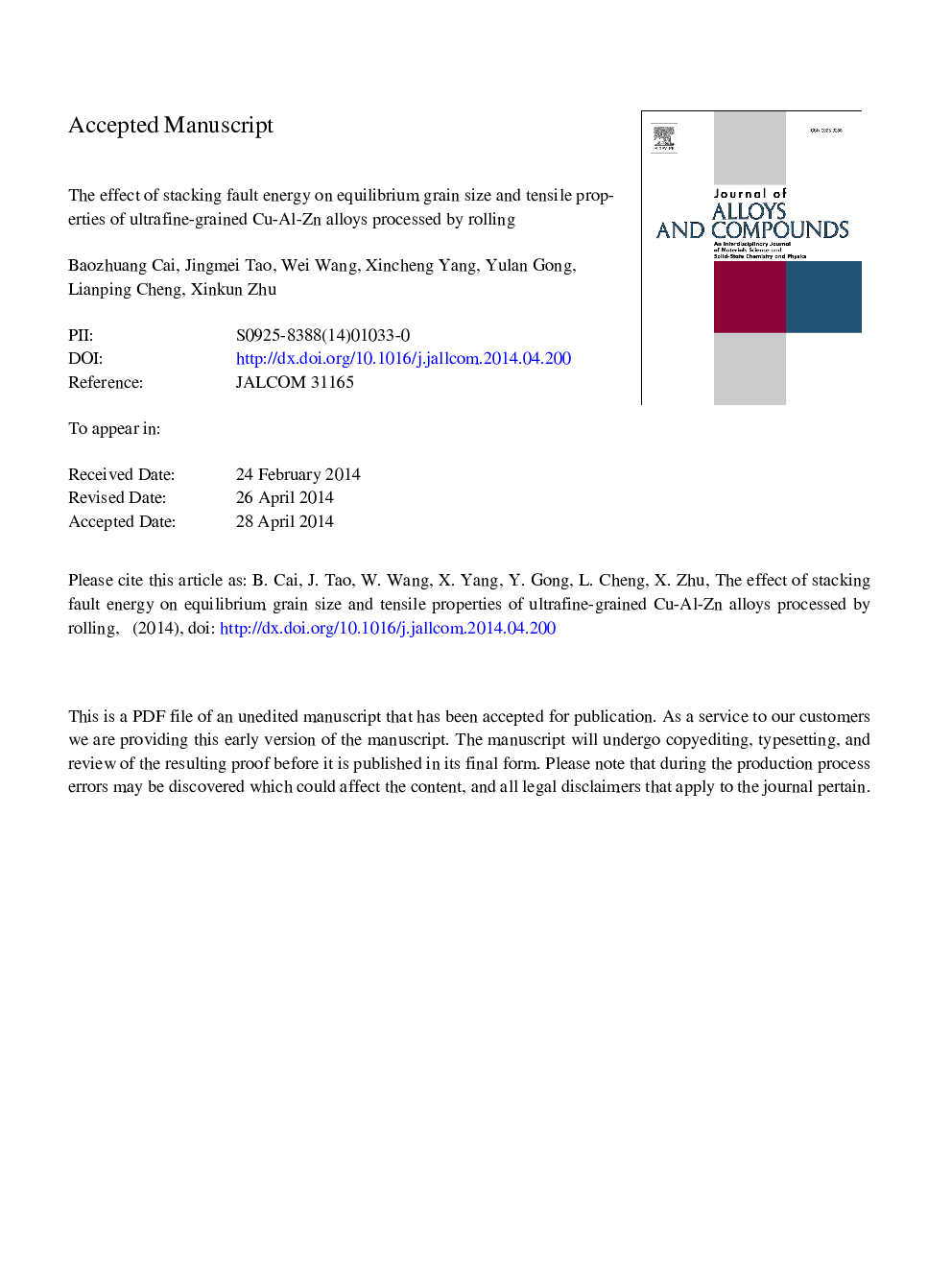| Article ID | Journal | Published Year | Pages | File Type |
|---|---|---|---|---|
| 8001457 | Journal of Alloys and Compounds | 2014 | 27 Pages |
Abstract
Cu-2.5Â at.% Al-2.5Â at.% Zn, Cu-4.5Â at.% Al-22.8Â at.% Zn and Cu-12.1Â at.% Al-4.1Â at.% Zn alloys with stacking fault energies (SFEs) of 40, 10, and 7Â mJ/m2, respectively, were processed by combination of room temperature rolling (RR) and liquid nitrogen temperature rolling (LNR). The effect of SFE on microstructure refinement and mechanical properties of these materials were investigated. Microstructural observations indicate that a decrease in SFE leads to a decrease in crystallite size and to increase in microstrain, dislocation and twin densities for the RR and LNR samples. The results show that under the same deformation conditions, lower SFE promotes the formation of nanostructures and deformation twins. An analysis shows that the experimental results are consistent with a theoretical model which predicted the minimum grain size produced by milling.
Related Topics
Physical Sciences and Engineering
Materials Science
Metals and Alloys
Authors
Baozhuang Cai, Jingmei Tao, Wei Wang, Xincheng Yang, Yulan Gong, Lianping Cheng, Xinkun Zhu,
